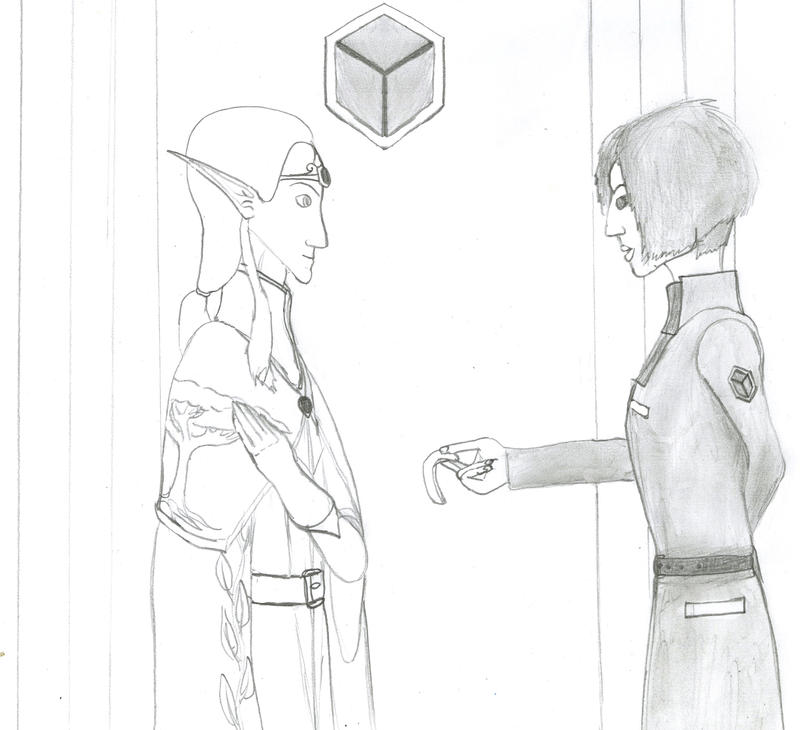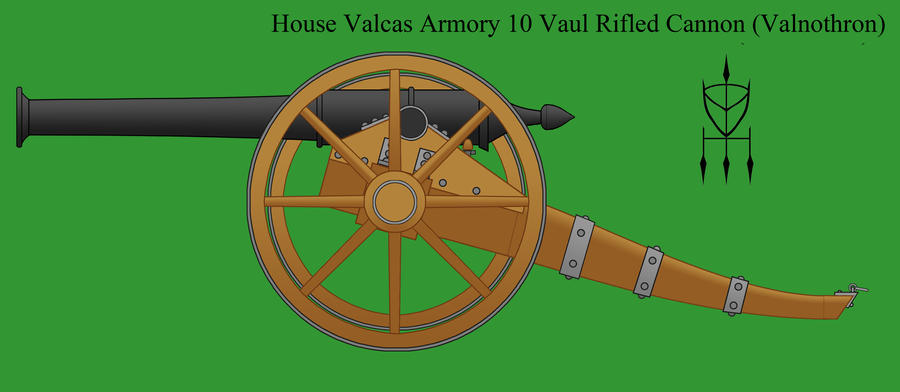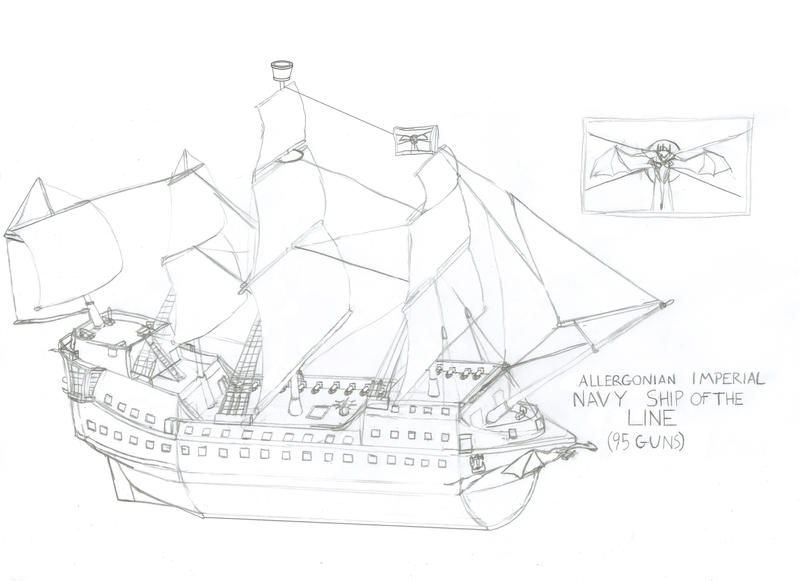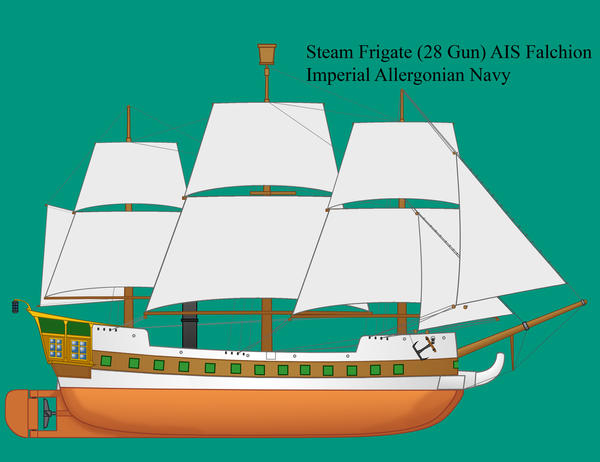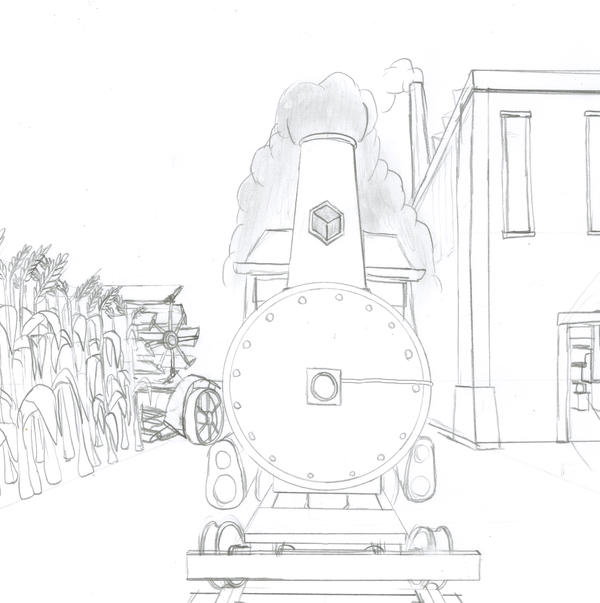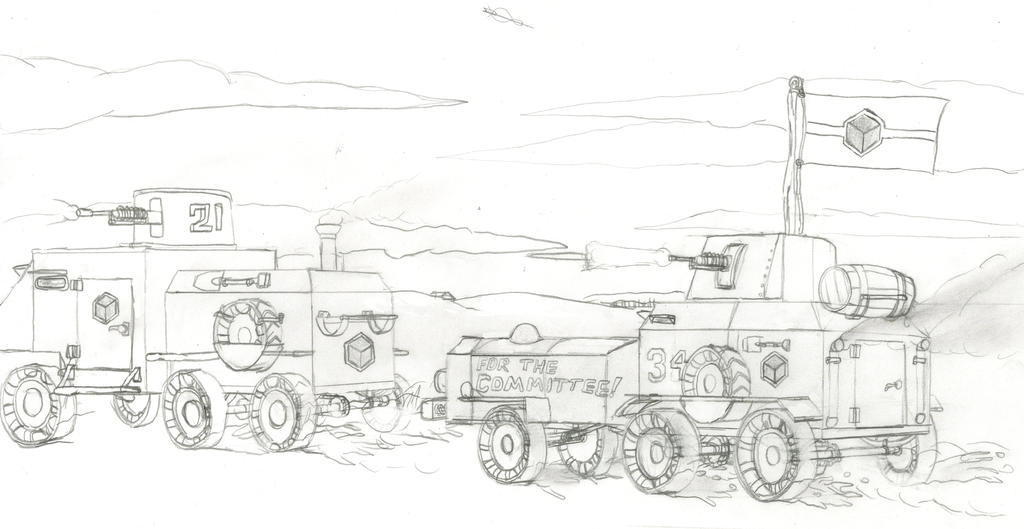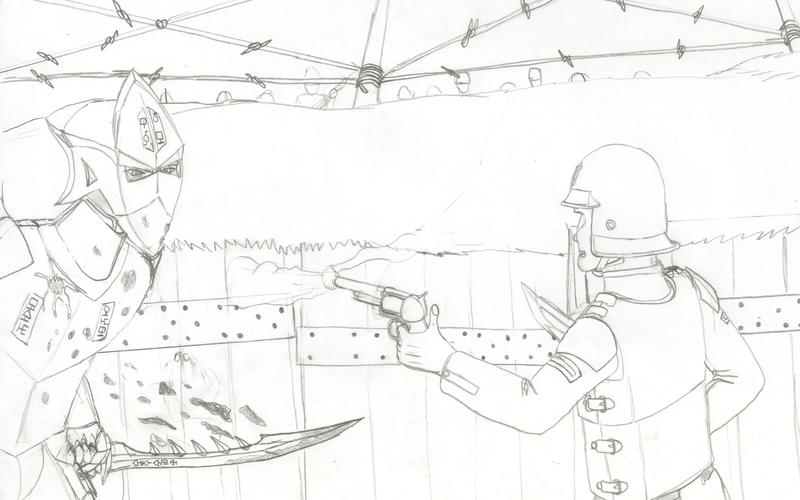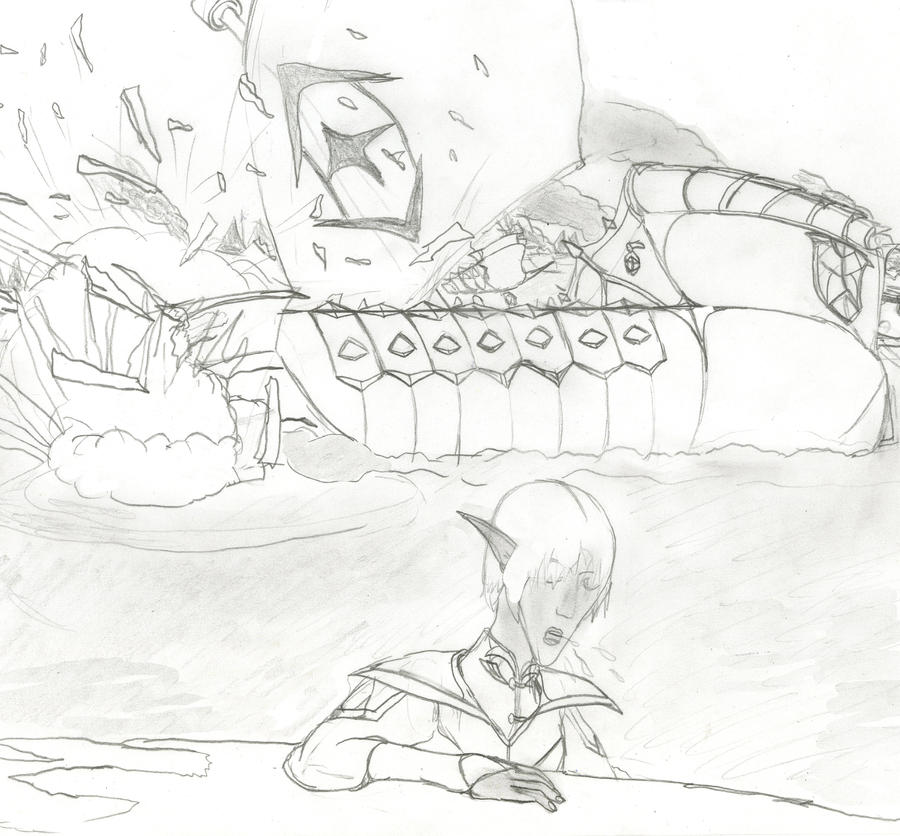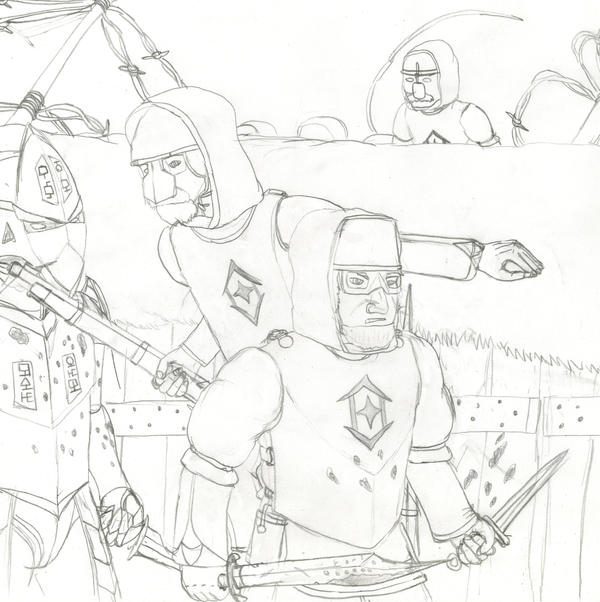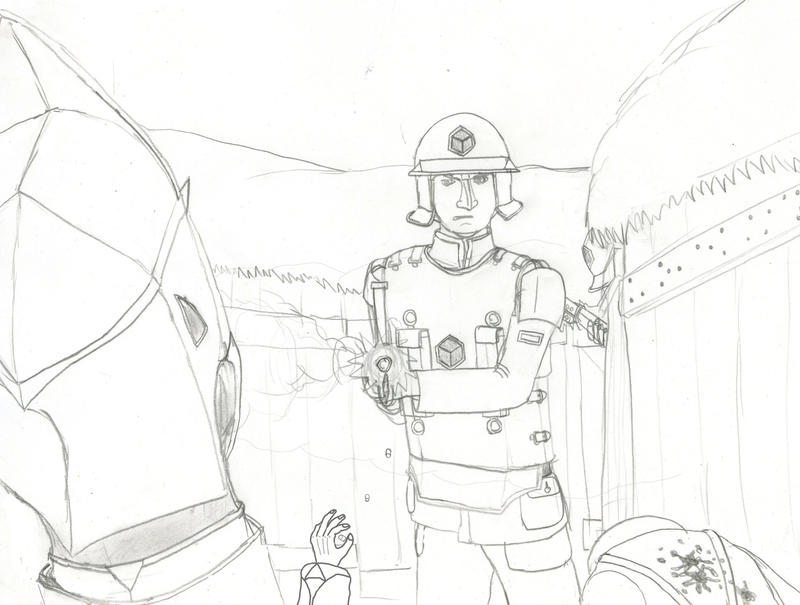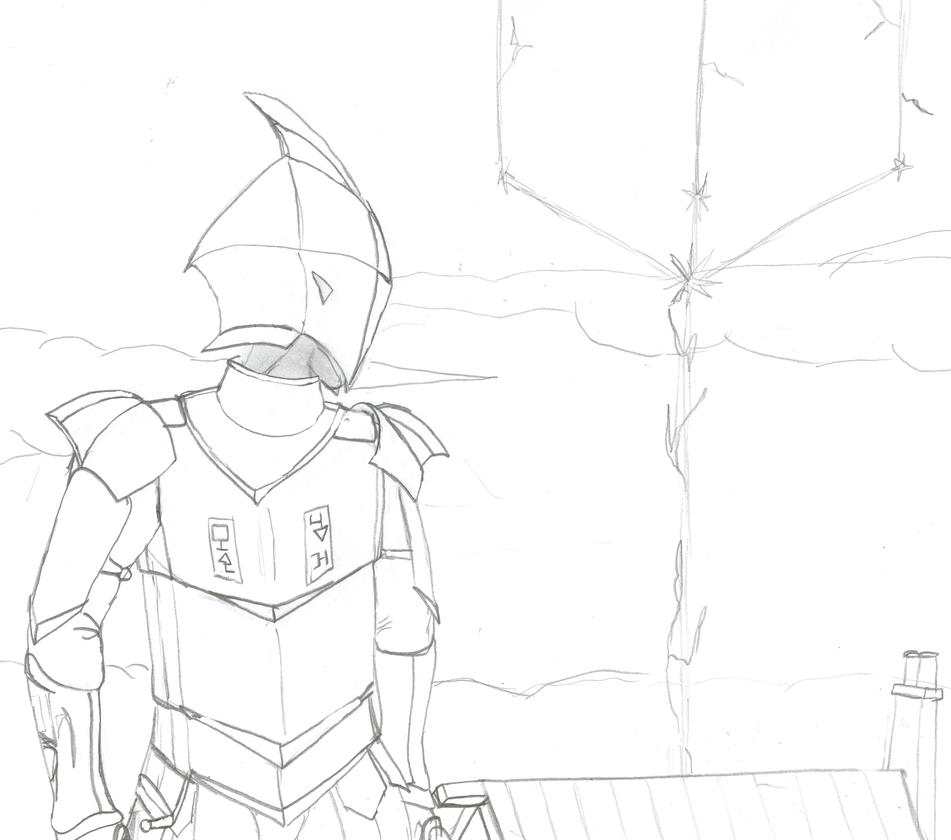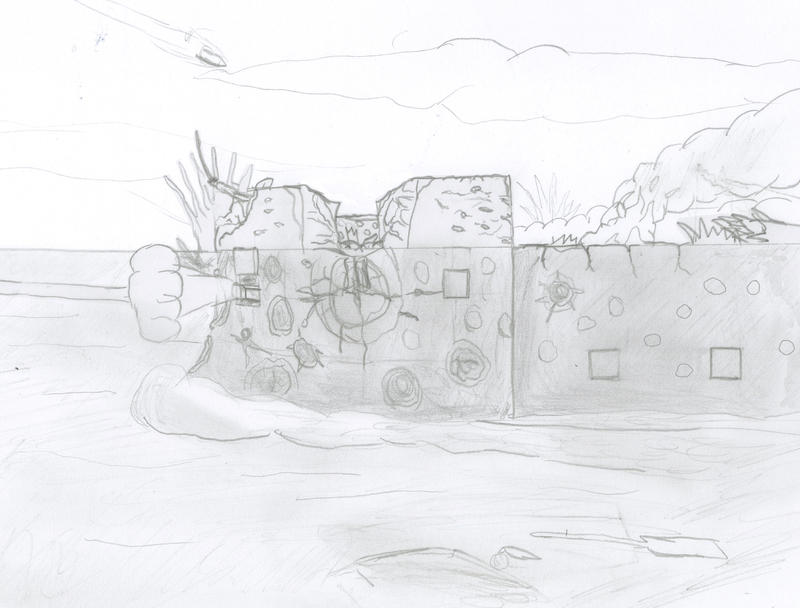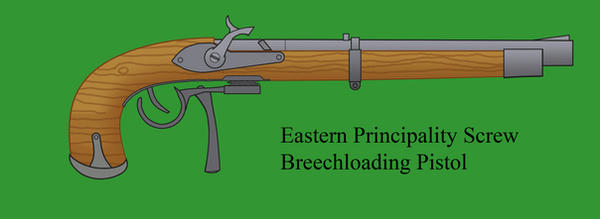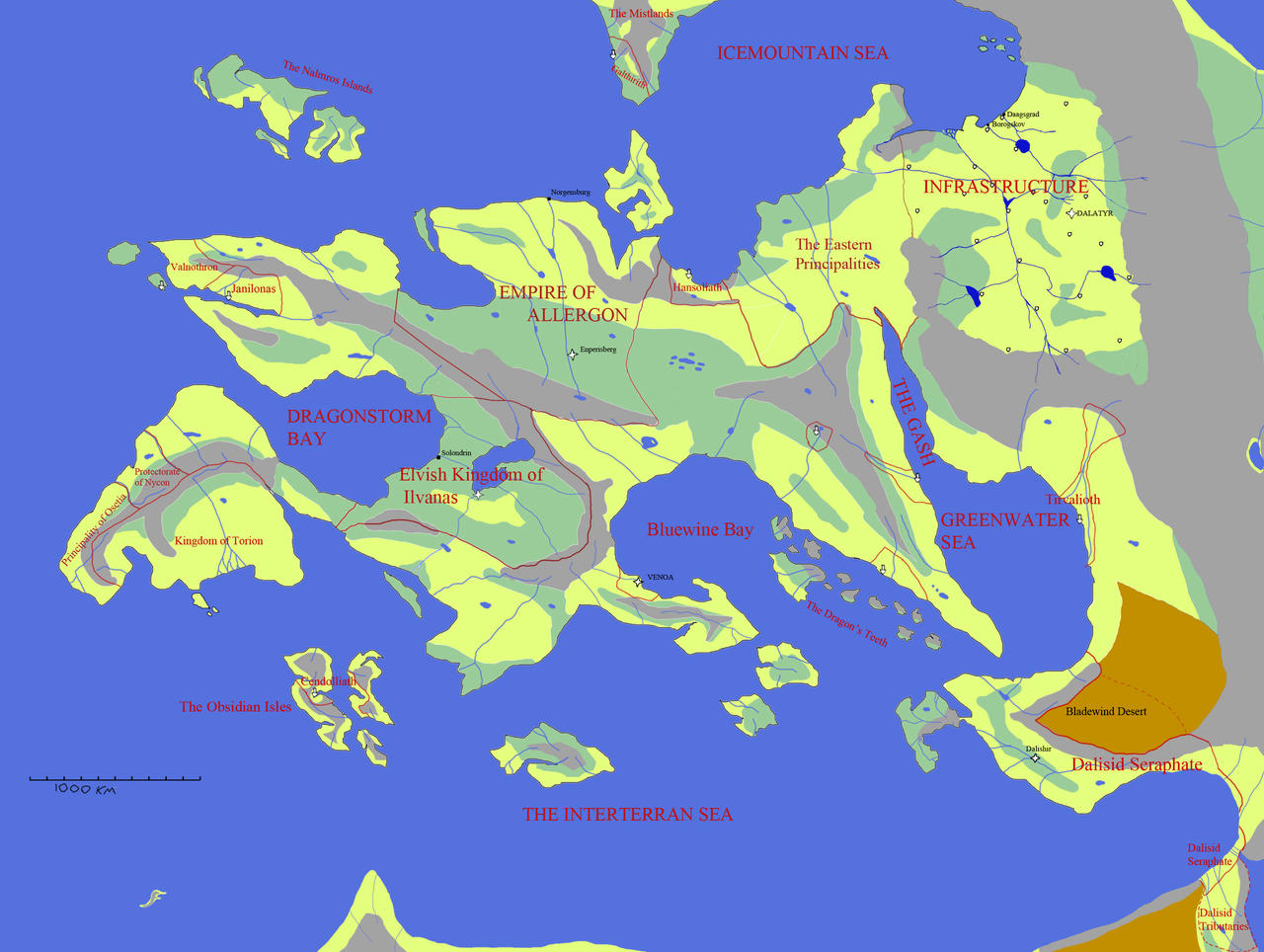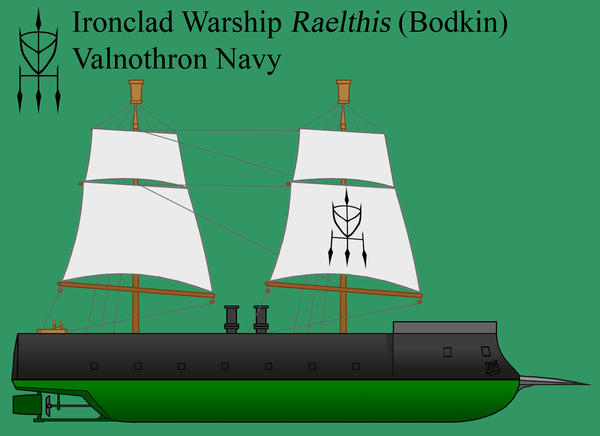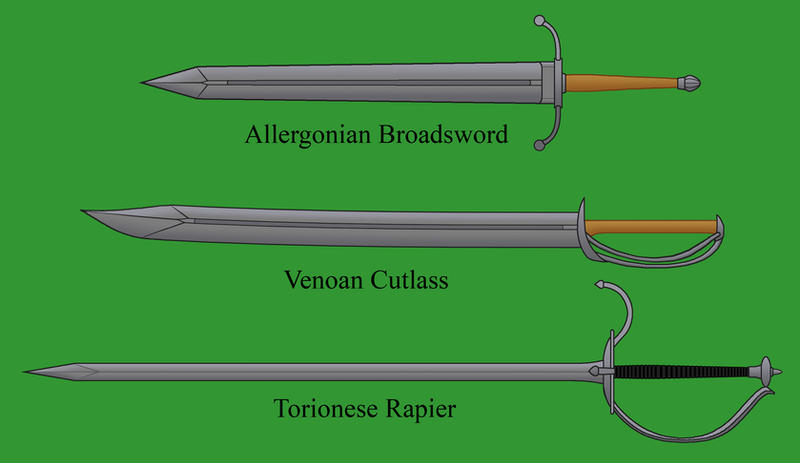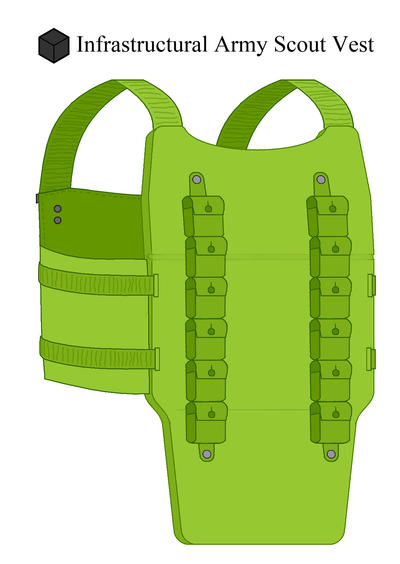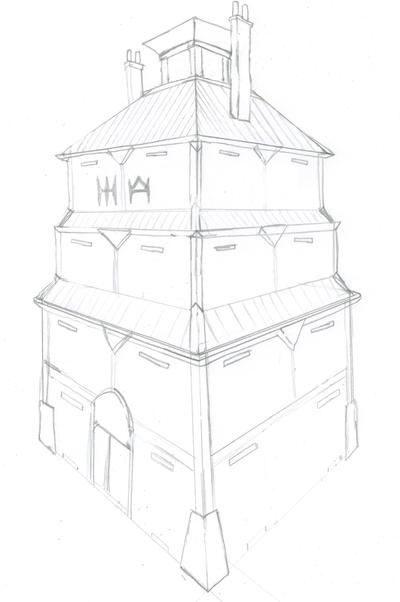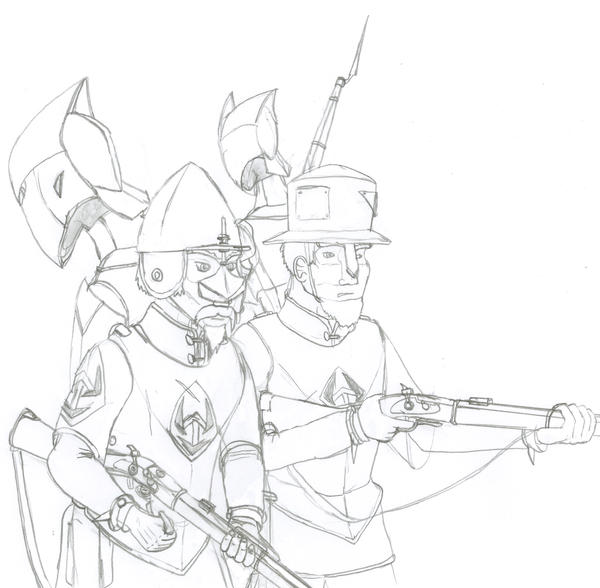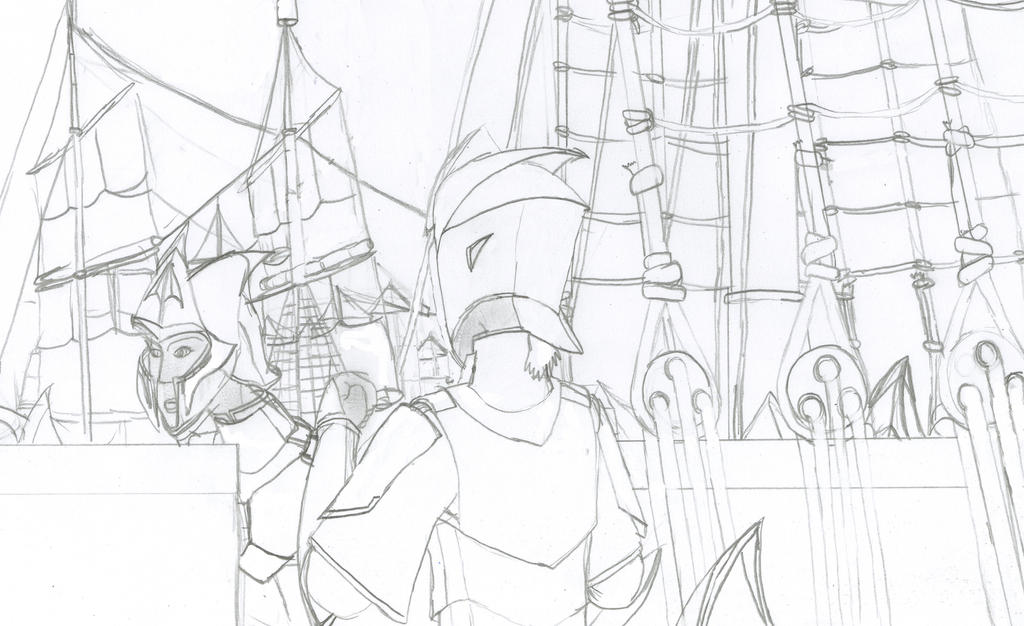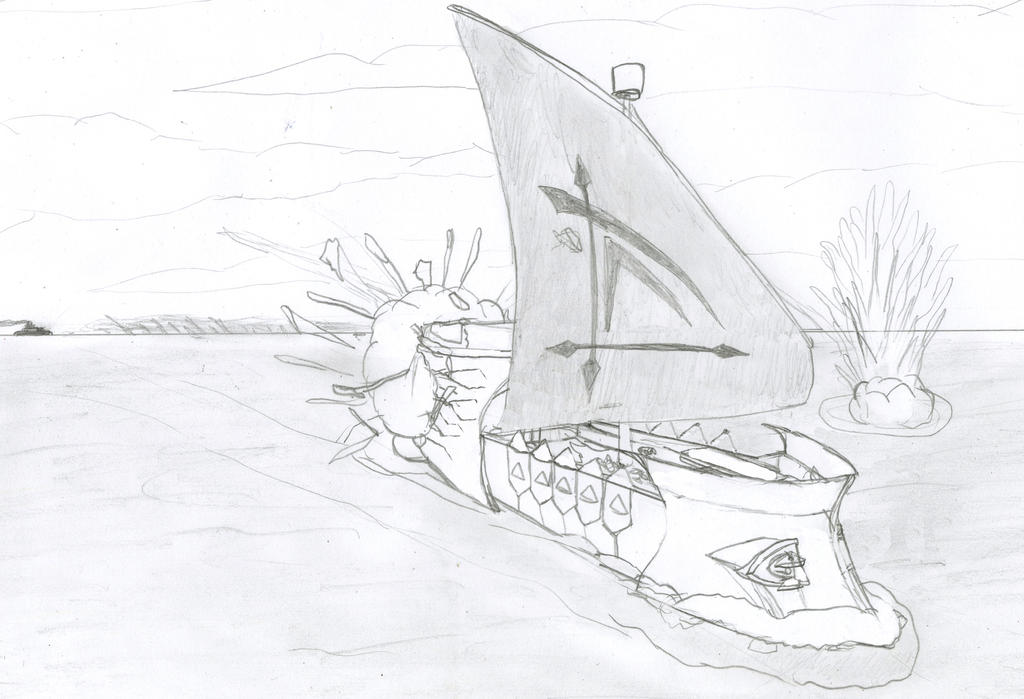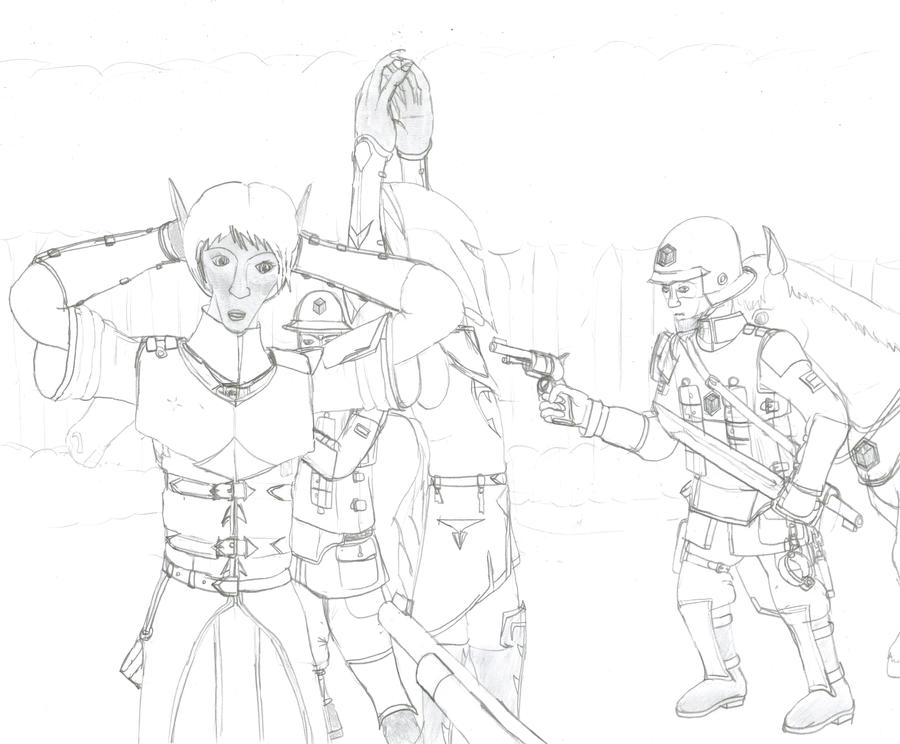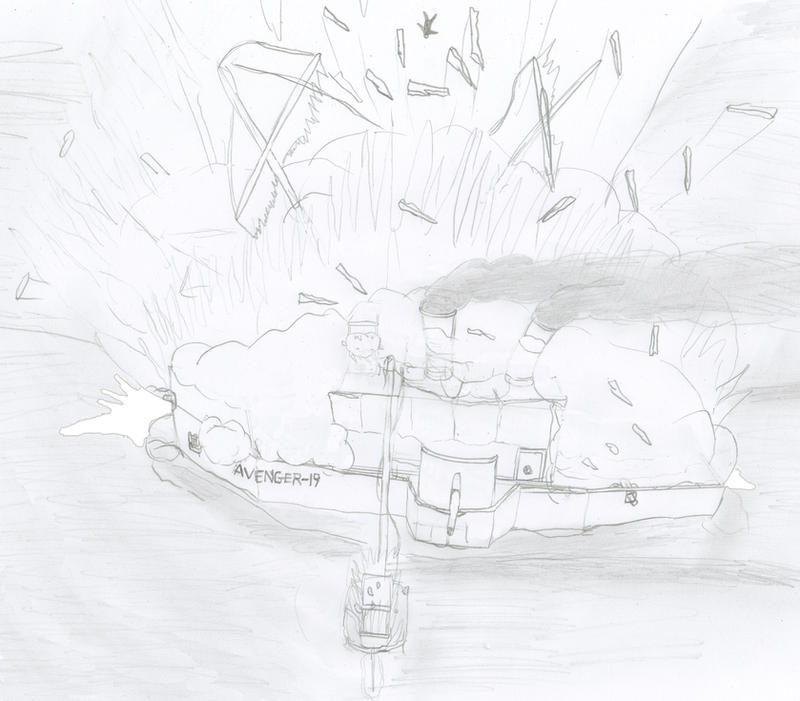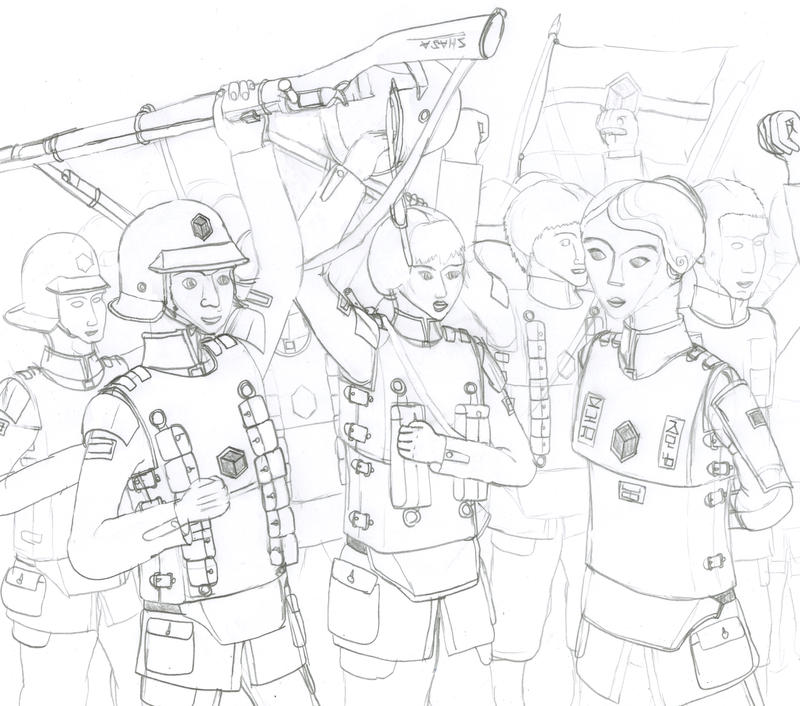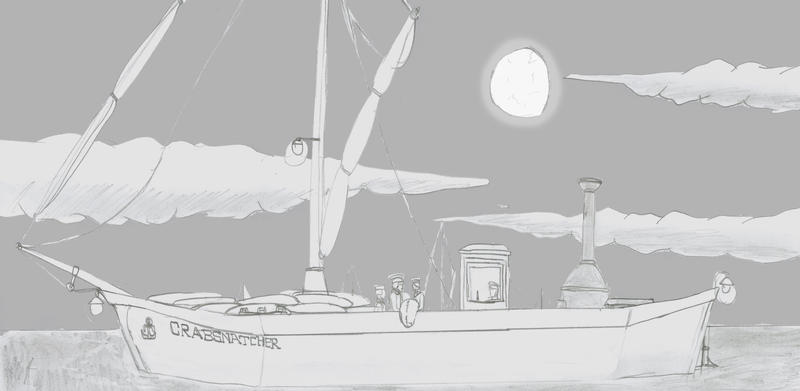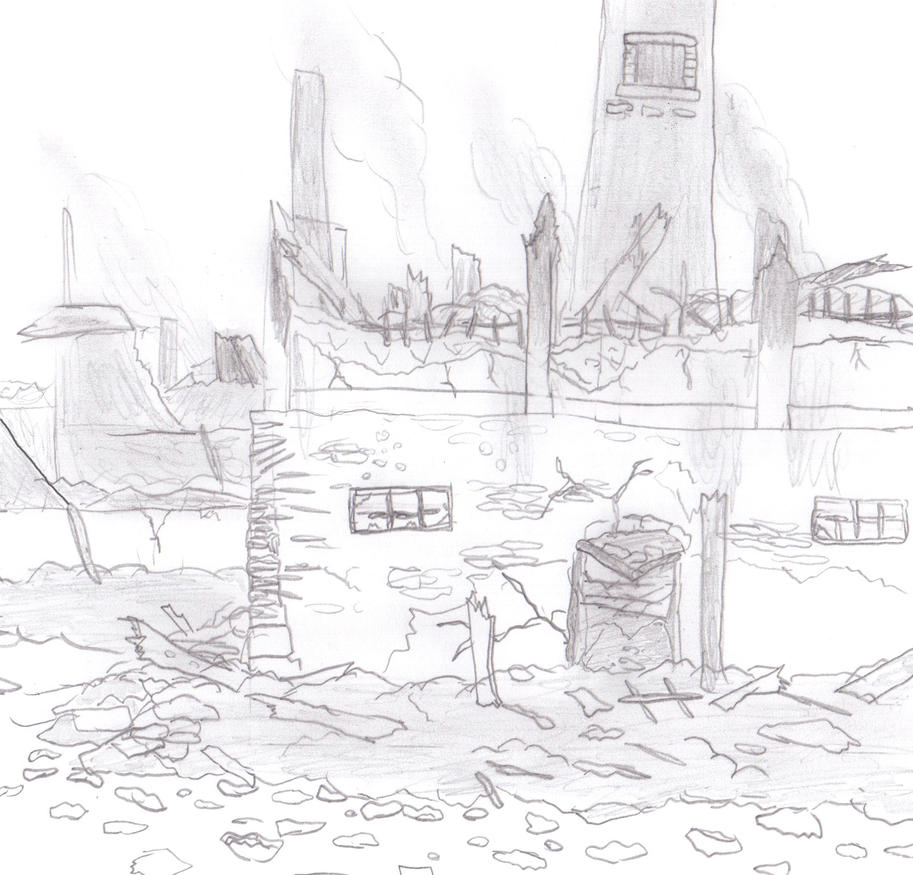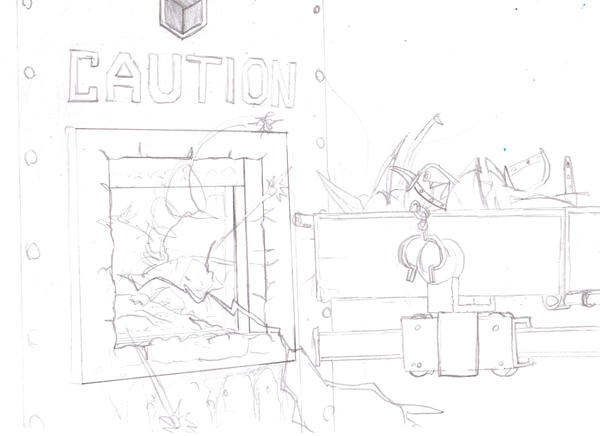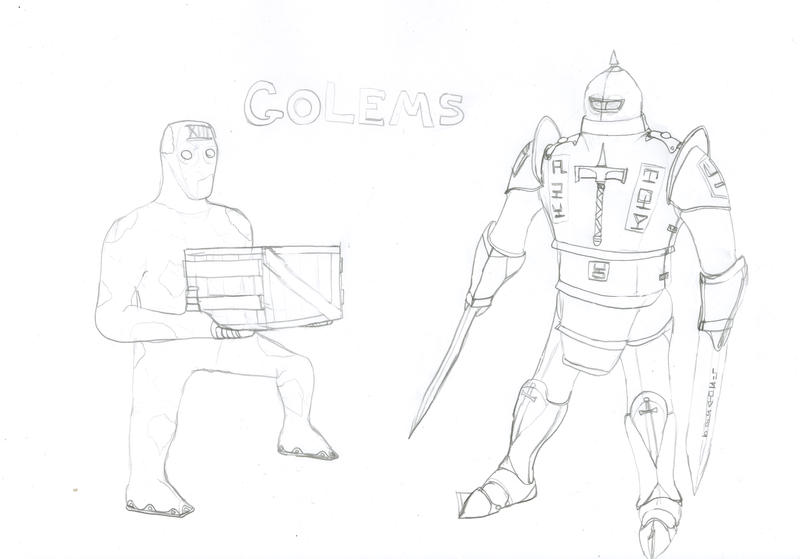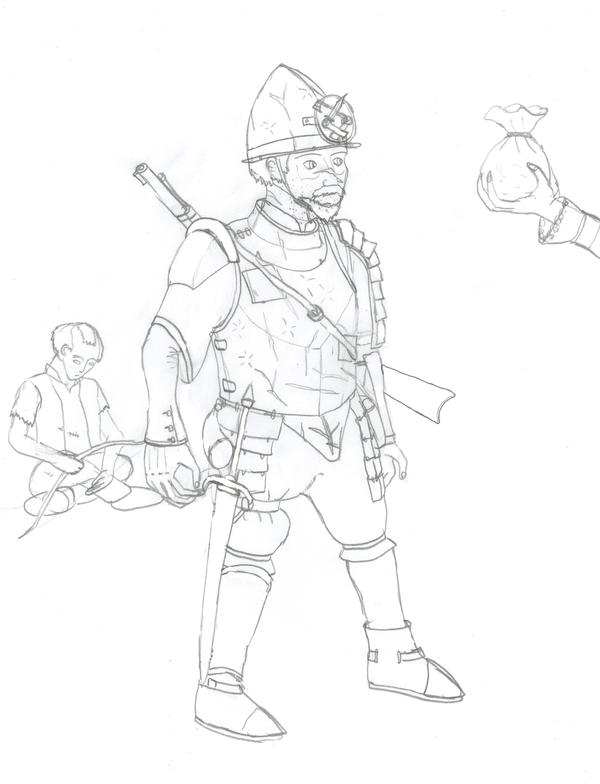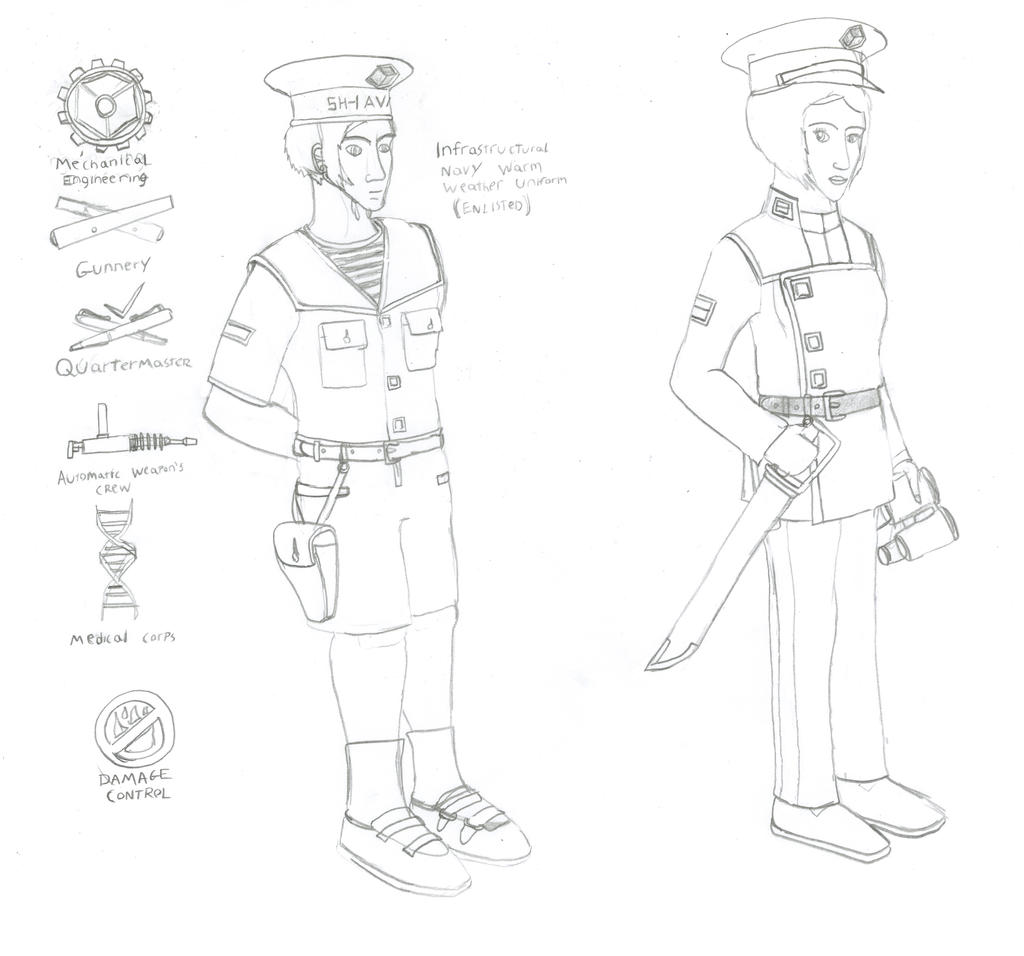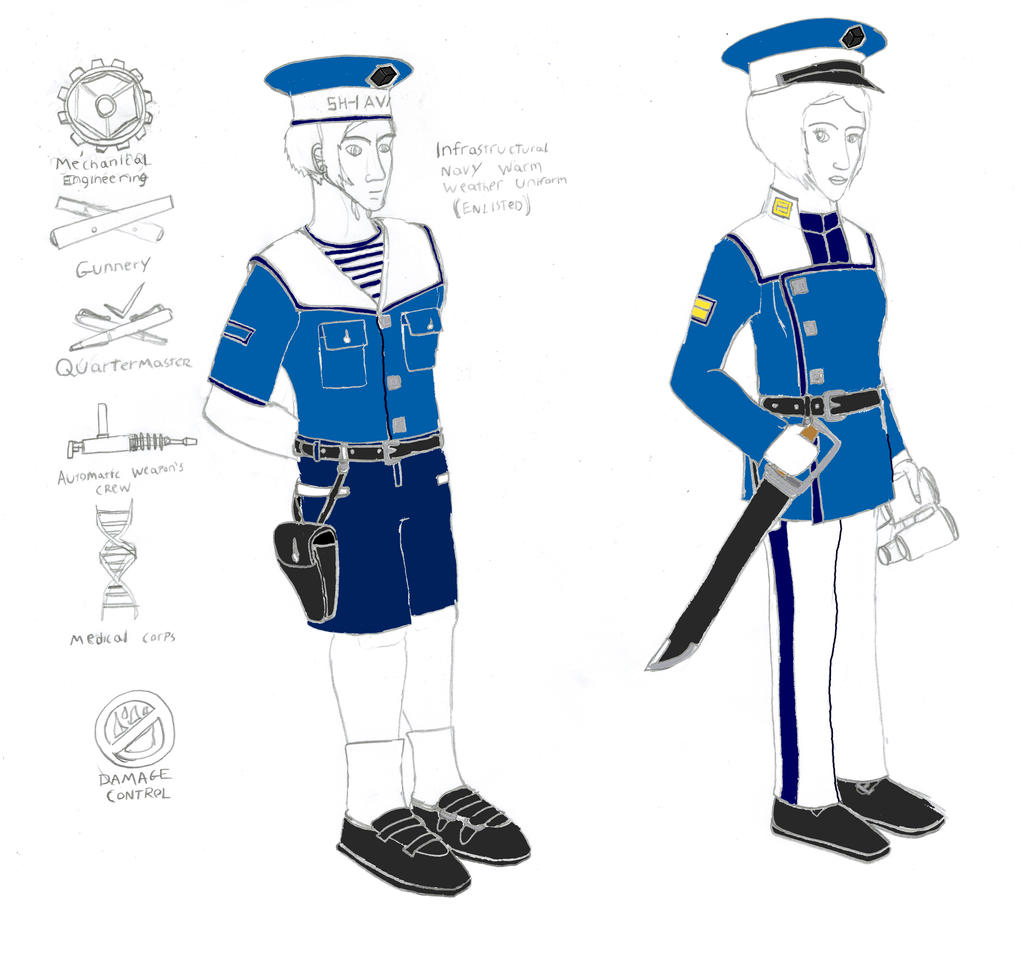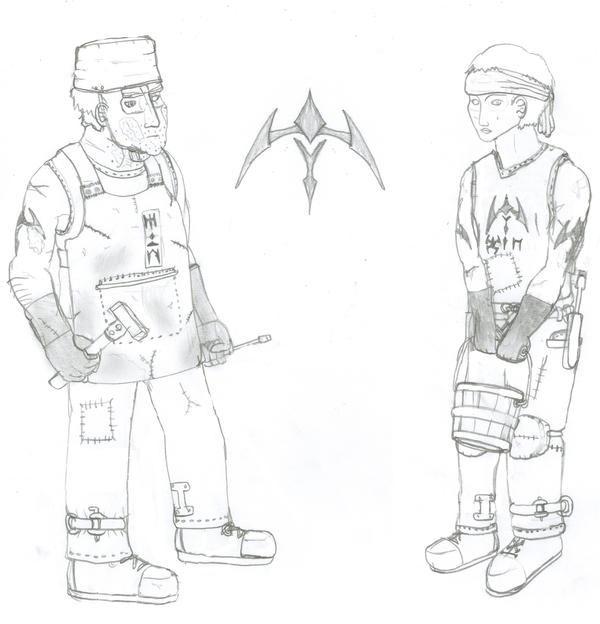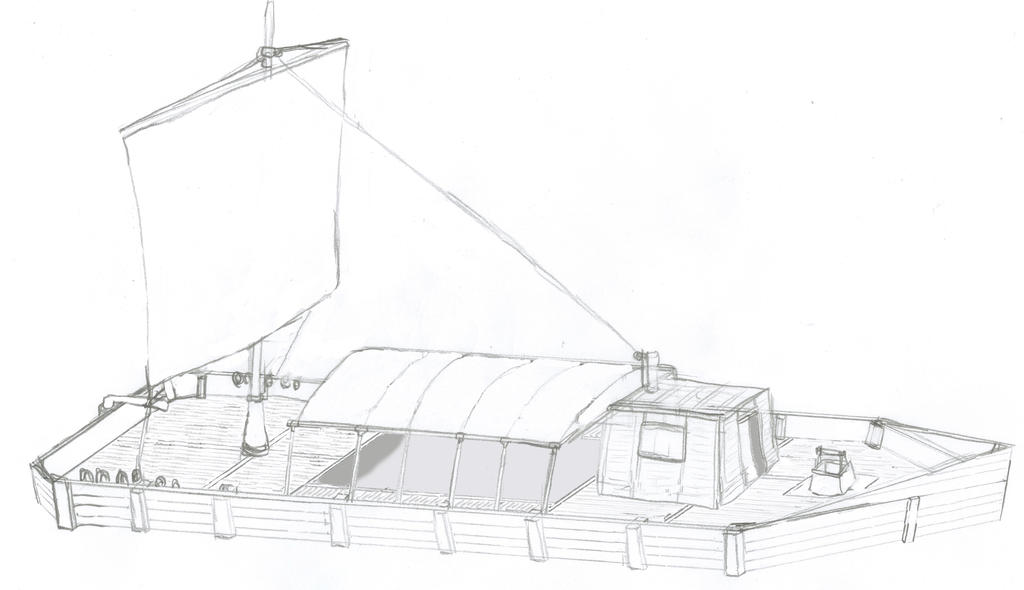(Daagsgrad Citadel, Daagsgrad, Late Autumn 36 IA)
Sven had the experience of both reading about and personally meeting officers who's greatest desire was to be out on campaign leading an army marching through the wilderness to meet the enemy and who's greatest dread was being stuck behind a desk. As far as he was concerned as one of the major commanding officers through the Wars of Unification said people were insane. On the whole and as far as Infrastructure's interests were concerned it was a useful insanity, but insanity none the less. He was grateful that most of what he had to do in this war had a nice set of quarters nearby with warm bed, even if remained free of Stefia. He was grateful that the Daagsgrad citadel allowed him his quarters and he could settle into the blessed duldrums of paperwork.
The Mobile Reserve Division would remain in Daagsgrad for a few months at least. New troops and supplies were arriving from the south at a constant pace, but regardless the city's garrison would remain under strength while security was being beefed up. Neither he nor the Committee expected another attack to come soon, but nobody wanted to take any chances. In addition there were mop up arrangements, which would probably keep on going for months and the transfer of technicians, army-Engineers and equipment to keep the battlesteamer fleet in working order. This and a myriad of other small tasks kept him occupied all day. He also had to put up with a fair amount of praise and deification for what he did both by his men and the garrison. He knew why they did it, it's just that in the end he had just executed the orders that he had been given and their were plenty of other commanders in the army that could have done just as well as he did. More than anything else it made him embarrassed.
Even so his mood had been improving. Infrastructure was safe for the time being at least, as was his family. His men were in good spirits in spite of everything. They had managed to beet off and largely destroy a Drow invasion force in spite of all their magical abilities. The defenses were being bolstered, the rot of rebellion had been cut out and some sense of normancy was returning. There was still some concern about what was to come, but for now at least that was something which could be handled.
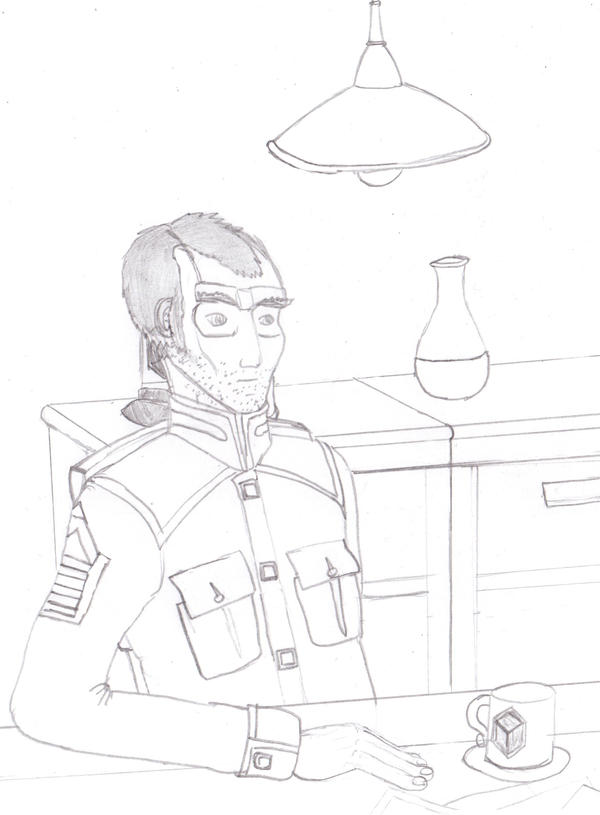 (The Great Bog, Late Autumn, 36 IA)
(The Great Bog, Late Autumn, 36 IA)
Of the five groups the fleeing Drow convoy broke into four managed to escape. The one which elected to go on the most southerly coast was the unlucky one, which was persued and eventually overtaken by six Infrastructural warships. Even after they broke formation at a full sprint they were never the less eventually overtaken and one by one destroyed, with a small group of cargo ships following them to fish out survivors. One of it's escorting frigate managed to escape but none of the cargo ships eluded destruction. Even so two ships managed to avoid being sunk by driving their ships into the coastline of the Great Bog. Their crews and passengers quickly disembarked and set off their magazines to deny them to the Coldlanders. One captain had the slave section of his crew killed, though a couple of his drow sailors did receive some wounds by slaves in panicked self defense, most notably a gunner who had a humerus and several ribs broken by a carpenter's mate with hammer. The other captain simply had her slaves run away, shooting a few of them for good measure. A few more Drow sailors managed to flee there on rowboats, improvised rafts and in a few cases simply swimming to to the shoreline. Either way as soon as they could they made their way into the bog's great forest as soon as they could, some 530 Drow in total managed to fade into the forest.
That had been six days ago. As far as Deljan ti'Algraas things were bad and were most likely going to get worse. He was in charge of a group of some fifty sailors and evacuated warriors, one of three that his captain had to strike out, reasoning that this improved their chances of at least some of them surviving, even if. They had pushed inland and avoided detection so far, but they had limited food and ammunition with winter coming on. There was fish to catch and game (including some man sized salamanders which could bite someone's foot right off but tasted alright if spit roasted) but that would only get them so far. To get through the winter they were going to need food, shelter and warm fires. The latter two of these would be comparatively straightforward once they found a good site, even if it would be a fair bit of work to build their hopefully temporary dwellings and gathering enough firewood. The latter would most likely involve raiding some native villages for what stores they had which had a lot of potential complications. Even so, the alternatives of surrendering either to the Infrastructurals or to Death was not worth contemplating. They would survive.
In the dense forest it was hard to tell what time it was. One knew when it was day, night or twilight but making out where the sun or the moon was in the sky was generally difficult through the leaves of the forest, which were yellowing but still thick. By Deljan's reconing it was sometime in the afternood when one of his scouts came to him in a rush. "Sir," she said "We're being stalked."
This line was more confirmation of Deljan's suspicions than anything else. "Get the word out to get ready for a fight" he told her. A few second latter he quietly drew his sword without ceremony and got ready for battle, this filtered through his forces with a similar easy transition.
Shortly afterwards he heard something he did not expect. "Do not be alarmed and hold your fire, we're on the same side." The words were not loud but carried quite well even through the forest. More importantly it was spoken in the Dark Elven language with a perfect Janilonas accent.
"If you wish us no harm then show yourself!" Deljan barked.
"Very well." Shortly afterwards a figure came out from the scrub and walked towards him. She had a hooded cape, a crude deerhide jerkin, pants, Drow bracer and what turned out to be an Infrastructural soldier's stolen shoes, gators and tunic while carrying a drow dagger, a quiver of arrows and a simple bow. "I'm Kalnara Ti'Drenvas, former gunnery mistress of the Janilonas navy and leader of my band of maroons. I presume you were part of that failed invasion?"
"Third Mate Deljan ti'Algraas and yes we were." He said, letting his bitterness just show. "We're in need of food, supplies and shelter if we're to survive until rescue."
Kalnara mulled it over for a second, weighing the costs and benefits of helping them. "For now at least we can provide you with some of that and we can show you the basics of survival in this damnable bog. But you will have to pull your weight and you'll do what I say. I survived here for more than a year, you haven't."
Deljan mulled it over for a second. "Very well". She gestured them to follow her, they did.
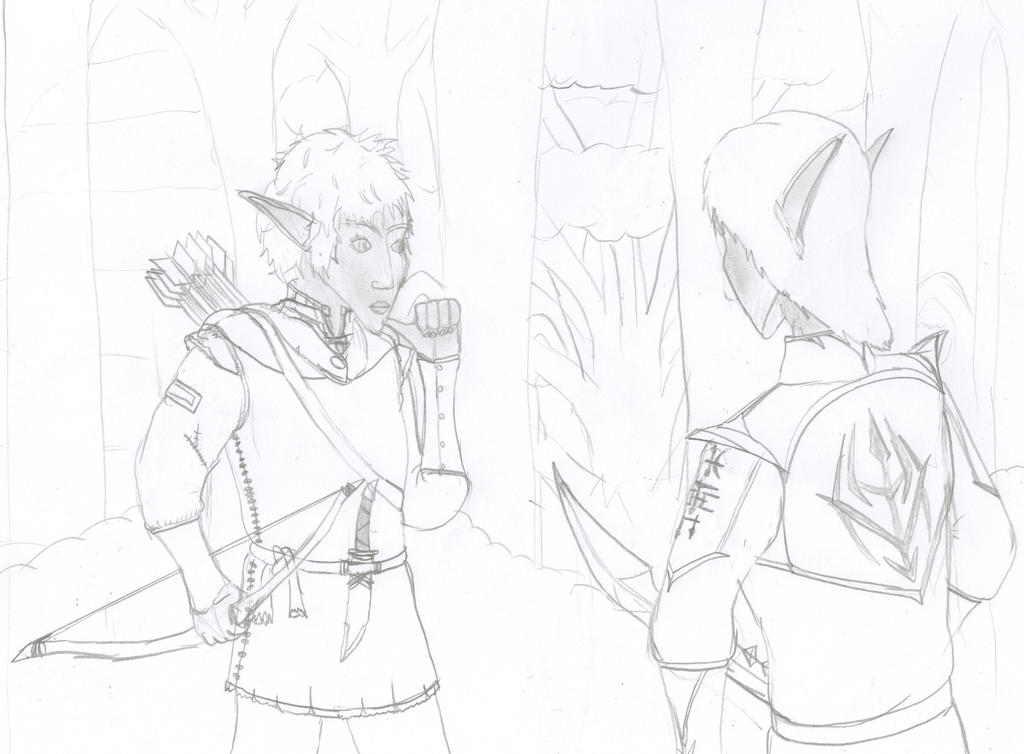 (House Valcas Estate, Valnothron, Late Autumn 36 IA)
(House Valcas Estate, Valnothron, Late Autumn 36 IA)
Talnara ti'Valcas had not had a good day. This capped off a weak of bad ones and knew that more such days were in the work. The defeat at Daagsgrad had been the most costly defeat the Dark Elves had faced in decades. Some 12,200 warriors were lost among them many of seasoned veterans and officers. Of a hundred and forty warships seventeen had managed to slink back to port, one of which being so badly damaged that it was to be taken apart so that it's timbers could be reused elsewhere, none of them larger than a frigate. Add in the losses of cargo ships (which were fortunately lower) and that added up to some 29,000 Drow dead, missing or (to the suprise, disgust and dispair of those who found out about this) captured on top of the loss of ships (including the squandering of the
Raethis regardless of what the Janilonas embassy had to say about the matter), nightdrakes, weapons, armor, equipment, janissaries, slave sailors, ammunition and provisions that had been lost and the destruction of much of the spy network. Among the losses were four companies of House Valcas' warriors and two frigates. Even so many thought that victory could have been achieved with a bit more preperation, if they had moved out sooner. All of that in exchange for a few thousand peasant conscripts, four enemy warships sunk and three more damaged. Had their been a victory, even a costly one, there would have been an enthusiasm to push inward to reap Infrastructure for all she's worth. A defeat with similar losses wrought by The Eternal Foe's would have led to a concerted attack to retaliate and repay those losses in kind and with interest. The response to this defeat had been a massive row to find out who was to blame.
First there was the usual conflict over force dedication. None of the four governments of the coalition could muster the needed support to give a full call to arms in this war against the Infrastructurals. As such the invasion force was made up of a mixture of troops (mostly Janissaries) and naval forces provided by the state governments and what forces (naval and land) the various houses were willing to voluntarily commit. Those houses which had commit forces blamed the defeat on those who did not contribute and accused them of cowardice, who responded that this entire war had been an ill planned costly farce from day one. Among the supporters there were accusations of not pledging enough support or committing it soon enough, generally with the usual old conflict between warrior and merchant houses as well as the newer conflict between the newly risen colonial houses and the older established ones in the homelands. There was also the matter of warriors who were captured or (and far worse) surrendered. How many had managed to disgrace themselves so totally and irredeemably was yet to be known, but it was never the less used as ammunition by all parties against their rivals. This was before the conflicts between the various states were factored in as well as a myriad of smaller issues. A fair amount of this was leveled at House Valcas and by extension to Talnara in increasingly unpleasant meetings.
If there was a silver lining to this it was that House Valcas's shipyards and armories had contracts lined up for years for new weapons, artillery and ships to replace what was lost. There were a few traditionalists who blamed the failure on "not sticking to tried and true methods" but fortunately more could think about things logically for two seconds and saw the need to upgrade and given what information they got out of the battle via linkstone and reports things were not so hopeless in the long-term. Twenty Vaul guns could at least do some damage to an Infrastructural Ironclad at close range and heavier guns could at least make themselves known at long range. The new 35 and 45 Vaul guns that they were making in quantity should come to the Infrastructurals as a nasty surprise, as would the new breechloaders once they could make them in meaningful quantity. They also had plenty of orders for new steamships and there was particular interest in their new ironclads. All of which added up to millions of scimitars coming into House Valcas' purse. While this was all good money was no good if you were not around to spend it and the Assassins' Guild had gotten more business than usual as of late and there were those who resented their . That meant being extra careful in everything just to be on the safe side and as three centuries of experience had taught her this was both necessary and at best a major annoyance.
After ten days of putting up with this after the day's business was done she slipped to her now thoroughly swept and well guarded apartment, had a trio of random slave servants bring up a flask of wine, taste test it and for a few hours let her problems drown. She had to be careful about retreating even for a short time into the haze of alcohol lest it become a habit. Even so right now she would indulge, having had more of of her share this week.
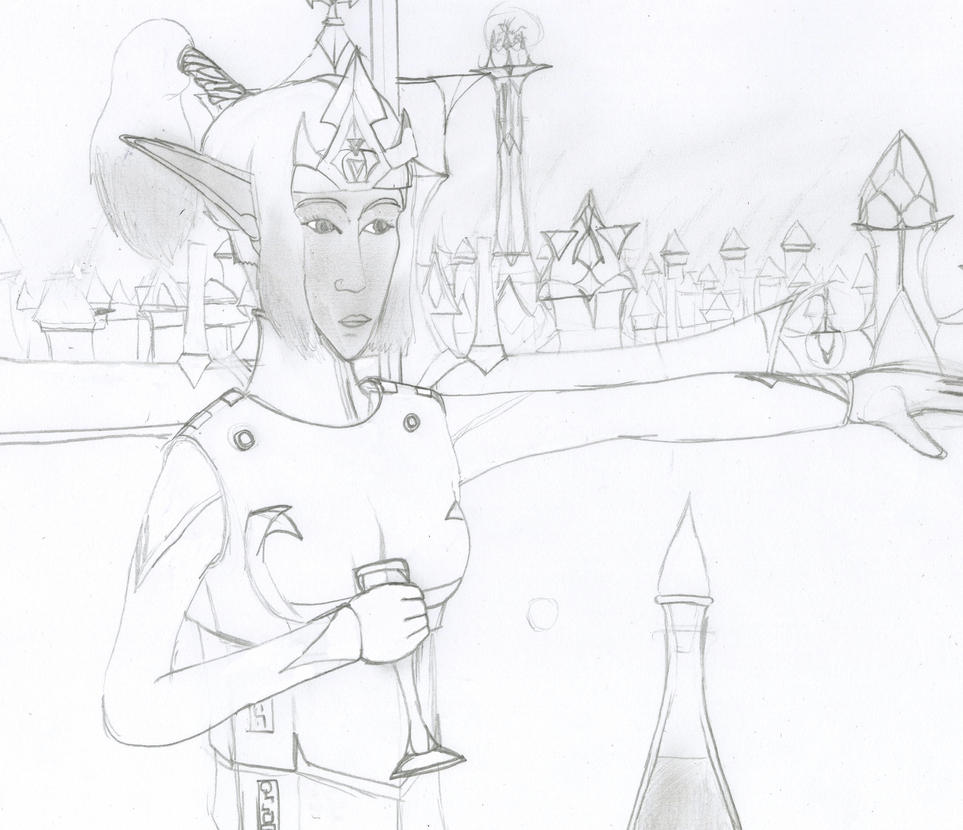 (Waterfront, Venoa, Late Autumn 36 IA)
(Waterfront, Venoa, Late Autumn 36 IA)
Like the rest of the Venoan Embassy staff Bureaucrat (Level 3) Ayna Fedorvich had been a bundle of nerves when she heard that that Daagsgrad had been attacked and was overjoyed to hear of the victory. Her mother had been sold to slavers by some warlord before being liberated by an Army platoon and the thought of tens of thousand of men, women and children being subjected even half of the things that she told her that the slavers did was enough to make her want to curl up somewhere. She had gotten through it by trying to keep busy through every waking second and there was little surprise when she decided to skip the party in favor of sleeping for fourteen hours straight. After that she got back to her usual work at a more usual pace.
Most of that had to do with overseeing inventory, making sure that shipments were received, their contents verified, properly stored and sent on their ways in a timely and efficient manner. It also meant dealing with various local groups for services, from warehouse owners to the guild of drovers and carters to rent willing golem owners. Even after more than a decade of operation there were still Venoans who still had a hard time getting over the fact crude northern savages could produce so many paperwork obsessed clerks. She wondered how long that would persist as she went over a load ready for shipment to the Coldlands.
Last night the
Povast had put into port. She was one of the bigger ships at 2,800 tonnes and was packed with trade goods and to celibate the victory by order of the Committee there was a two day long sale with all it's contents being 10% off. It did move merchandise quickly freeing up space quicker than usual, which was always one of their premium commodities even if she still had worries about the drop in income. The Venoan Embassy taken out yet another massive loan to cover expenses earlier this month and by what she'd heard they were negotiating the biggest one yet. She'd even heard reports that the the Embassy in the Kingdom of Torion had taken out debts from Venoan banks. Everything had been getting more and more expensive for them ever since the war began and they'd had been taking so much of it.
Sometimes she'd wondered about getting so much ore and metal out of Venoa and the surrounding area. There was some decent deposits nearby, though from what she'd heard they were nothing exceptional and it was a long voyage from here to Borogskov even in a steamship let alone having it take a month to sail north. They needed as much material as possible to make warships, cannons, rifles and bullets of course, it just seemed like a very roundabout way of getting it. Even so she knew that whatever else may come at least they had some respite while the Dark Elves were licking their wounds.
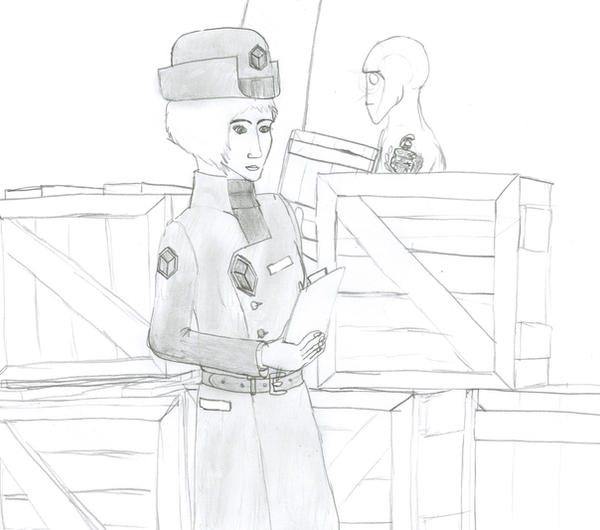 (Solondrin, High Kingdom of Illvanas, Late Autumn 36 IA)
(Solondrin, High Kingdom of Illvanas, Late Autumn 36 IA)
Anweil sein Delsian had been frustrated these last few years. She had a passion for the study of kingdoms, dynasties and noble lines as well as customs, etiquette and similar. Decades of study had made here a respected authority on the matter and had aided her in her career in foreign affairs. She longed to be the High King's voice to a foreign state and eventually after a century and a half of work she got her wish. The only problem was that this state was Infrastructure. Places like Venoa were bad enough with their patricians, guilds and elected leaders but even in those frameworks wealth and trades usually stayed with families with proven bloodlines and most people knew their station. The Committee by contrast just gave away positions of power and importance to random peasants who were good at sucking up to them. No esteemed bloodlines, no glorious heritages, no drive towards forging a glorious dynasty, just a collection of up jumped peasants good at passing tests. She understood that having good relations with them was a good move, she just hoped this foolishness did not spread. The fact that she had to deal with them on a regular basis and they had such a poor understanding of basic courtesies did not improve her opinions on the matter.
Their aims were simple enough: first of all they wanted trade. They wanted to buy magical items which they could not make in their frozen desert and raw materials in exchange for some of their mechanical contrivances and products. There was little objection to the beginning of that, though the thought of ripping apart the landscape for the thousands of tons of ore they wanted made her queasy and the market for their tinkerings let alone their shoddy general products was small. The second one, however was a more complicated matter which had to be handled delicately as it involved the Corrupted Ones. She actually understood their situation with the Drow and as distasteful as they could sometimes be she did see their value as allies. Even so there was the fact that they were still rebuilding and replacing the naval losses they'd suffered in the last campaign. A couple more raids had been sent out on Drow shipping since the war had begun but that was a fairly token effort. Moreover she knew that there were at least some member of the Court who wanted to leave the Coldlanders out in the the cold (at least for the time being) until they suffered severe casualties to keep their influences in check, a policy which she saw as being foolish despite her feelings to them. Even so she gave the Infrastructurals the appropriate lines relating to the situation. It was not praticularly difficult given the ambassador's lack of training but even so they were becoming more and more aware.
A couple of weeks after reports of a repulsed invasion she came Ambassador Povastov came to her with a folder after submitting yet another request for an audience the High-King. It was the longstanding custom that said such requests could be processed once a fortnight. The last time she had done so she'd given reports of the invasion fleet which had surrounded Daagsgrad. Since then the battle had apparently been won, though there was clearly some exaggeration in that they had been giving. This time she carried with her a folder. The appropriate greetings were given and the request was seen to be fit. It would still probably end up like the last thirty or so requests and be tactfully denied. They'd made their case near the beginning of the war before the King in which the situation had been given.
"My Lady," The bureaucrat spoke in passable High Elvish "before you submit the request for formal consideration I would request that you would review some material I and my government have prepared. If you feel it is worthwhile a note of recommendation would be most appreciated."
"Very well" Anweil said as she took the folder and examined the contents. Inside were a number of their Photographs which she thumbed through. They mostly showed images of battlefields, both at sea and from the land. The ones at sea were blasted wasteslands of craters and the ones at sea showed ships exploding and burning wrecks. The important fact however was that the ones on land were littered with the remains of Corrupted warriors and their pet slave soldiers and at sea dozens of their warships burned, broke apart and foundered. 'So it was not embellishment after all, they had managed to sink that many' she thought and she eagerly looked through the scenes of destruction.
"Very well" she said in a pleasant tone of voice "I'll give my personal recommendation and pull a few strings."
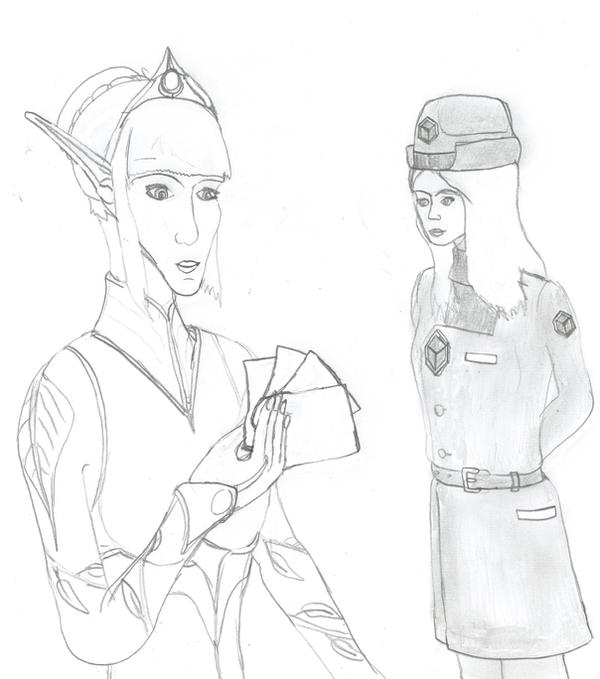 (Vhorimsburg, Allergonian Empire, Late Autumn 36 IA)
(Vhorimsburg, Allergonian Empire, Late Autumn 36 IA)
By the reckoning of the Allergonian Empire's customs Vhorimsberg was a minor city, it had a permanent population just above 22,000 permanent residents and all the official charters had been ratified four centuries earlier. It had the distinction of being the seat of House Vhorim and the second largest city in the duchy of Savaren after it's capital. Hundreds of kilometers from the northern sea or the southern mountains, Vhorimsberg existed mainly because it was more useful for the local farmers to have one nearby. Beyond that it made a modest profit off pottery, parchment and paper. Never the less, like any settlement of note it had it's share of blacksmiths. Among them was Master Blacksmith Staifen Ambus. He mostly made tools for Vhorimsbergs's other artisans and thirty years of beating iron had left him both strong and skilled.
Despite the affairs that had been going on elsewhere little had changed in Vhorimsberg since he had his apprenticeship had begin. He'd gotten more orders from the town's pair of gunsmiths, a few more young people were going off to Enperisberg, heard some talk in the pub, read some stories in the broadsheets, the paper trade was doing well and a few "Infrastructural" items showed up on market day, but these were side details. Iron was iron, it needed to be heated, hammered and quenched and it it did not give a damn about foreign affairs. Even so one autumn afternoon things would make their impression on him.
It started out normally enough, he'd met up with an metal merchant coming up from the south. There were always a few of them making their way from the Dwarf mines through the towns and smaller cities picking up stuff along the way and then selling foreign stuff as they went back, though they had been coming through a bit less often of latter. He was a bit better dressed than he usually expected them to be, but he gave that no major thought. No more than the halberd and pistol carrying man who came with him, who was probably his nephew or son acting as a guard and porter. It was simply part of the apperence he associated with merchants that were good at their trade: they were either thin and girlish or fat and pompus as counting coins did not take the strength a real job demanded. Regardless of that he was down to his last couple of ingots and maybe half a dozen bars and while if worse came to worse he could smelt some of the rocks the farmers turned up gathering them, sorting them out and firing enough of them even to make a hammerhead took time and coal that could be put to better use. The formalities were easy to handle, he offered the merchant a cup of tea, they exchanged a few lines about affairs in town and abroad and Staifen inspected what the merchant was offering (which to nobody's suprise was exactly what he said it was) and he said that he had five hundred and twenty five pounds of the stuff.
"...and how much did you want again?"
"All you have good sir."
"Very good." The merchant with a grin "That will be Forty Three Marks and three Viertals."
Staifen choked on his tea "What are you trying to pull? Iron's worth twenty pounds a mark." In truth he'd usually paid about mark for nineteen pounds of the stuff, though it prices did shift between seventeen and a half to twenty three pounds. The last couple of loads he had gotten were on the high end of things, but it was never worthwhile to be totally honest in bartering.
"And you'd might be able to get that price from the Dwarves themselves two hundred miles to the south." The merchant said calmly. "And you're of course free to go make arrangements with them. If you want to spare yourself the hike and wear and tear on shoes, i'm here right now standing here with my unchanged offer."
"I'll give you eighteen pounds per mark." Staifen said "You can take it or I'll find someone else."
"Then you can find someone else after a good long wait, tell me how many metal merchants have come through here lately?"
"Well one came by last month, did business the knifemakers."
"Which is more recently than I'd expected. Most of my companions have been heading out to the big cities this year or went looking for something else to trade because the Dwarves didn't have any extra metal to sell when they got there. Probably it'll be another month til someone else comes by with ingots by my reckoning and when he shows up he might not have as much as I've got here and now and he will ask for just as much as i'm asking for right now if not more."
Staifen started to reply but then stopped to think for a bit. The man seemed steady on this and he needed that iron. "Very well." With a huff he extracted a small purse out from his apron, emptied it of twenty eight marks, two Viertals and three schillings before pulling out a second and counting out the remaining change taking care to give as much of it as he could in smaller denominations. As he did so he glared at the fop who kept that smug look on his face.
"Yorin will help you bring the load in and get it out the crates" the Merchant said as he pocketed the cash and with care put it in a hidden safebox. This rough sequence was not a unique instance by any means.
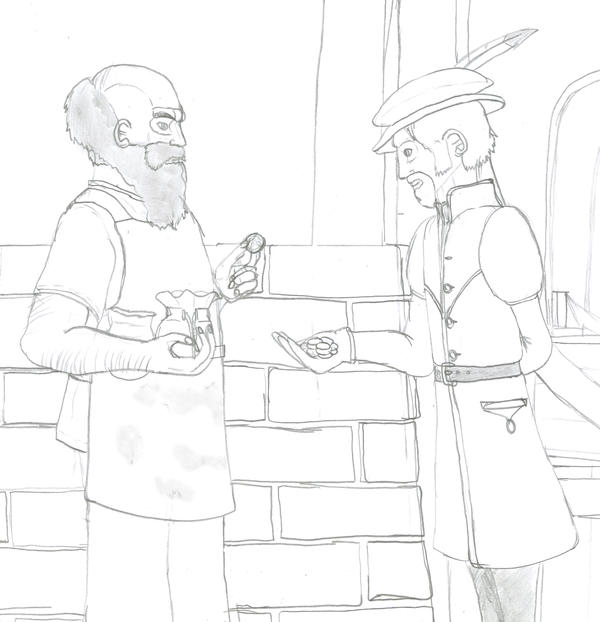 (Bluewine Bay, late autumn 36 IA)
(Bluewine Bay, late autumn 36 IA)
Captain Malonso Cosetti strode the forecastle of SVS
Scia as he enjoyed a unseasonably warm day and took in the sounds. There were the ancient sounds of wind, wave and a ship under sail as well as the sounds of eating as the crew took their lunch and the newer sounds of a chugging engine and turning paddle wheels. This was her maiden voyage, which was mostly sailing to Rislos in the Dragon's Teeth and back and seeing how well she worked. So far so good in that regard.
Malonso was among the youngest commanding officers in the Venoan Navy. Just after getting his commission in 1407 YO he had served on SVS
Fuocomare, the Serene Republic's first steam galley as an ensign. He'd been fascinated with the new craft and had approached his duties with a enthusiasm which his superiors noted. It also surprised them when he'd shown a similar keenness for his duties on the Steam Galley SVS
Lady DiMallangio after he'd survived the fire which burned
Fucomare to the waterline sixteen months after her christening. He'd been worried a bit after hearing that a couple members of the Fifteen wanted to abandon steam galleys after SVS
Mazza also burnt and SVS
Carronata exploded even though those were from the first squadron and by that point DiAgnellio and his associates had delivered newer and safer engines. Fortunately those voices were silenced after reports of Infrastructural victories over the Drow were received and the navy pushed for as many new Steam Galleys as it could. The facts that he'd had as much experience with Steam Galleys as any other officer and a good report from his superiors were ultimately enough to get him a command of one of these ships.
There had been an ongoing dispute between the inventors who'd been designing these new ships and the shipwrights at the Arsenal. The former always wanted to constantly experiment, refine and improve so that each ship is better than the last. The latter wanted them to settle on a design so they could quickly assemble dozens of them. Malonso understood that both of them had a point, but even so he was glad that the inventors had been allowed to tweak
Scia's designs given everything he'd seen indicated that she was improvement on anything that came before.
She was fifty four yards long and weighed four hundred and fifty tons, which was a bit larger than the traditional galleys which had been the mainstay of the republic's navy for centuries even though she did share a lot in common with them. The main difference between her and her predecessors was of course her double action engine driving her twin paddlewheels with (using a reckoning which the dwarves apparently worked out for mine pumps) 900 horsepower. This had allowed him to get her up to sixteen knots for short bursts and eleven knots at a steady sustained pace. Moreover it did so while taking up a fraction of the space that rowers would, which meant that the designers could delete the oar-banks, which meant that the she was both more seaworthy than her fore-bearers and gave her a proper gundeck.
An old-fashioned Venoan galley had three or five forward main guns, a single stern chaser and four 3-pounder broadside guns.
Scia retained the heavy forward arsenal with a massive new model 68-pounder cannon along with five 24-pounders (one in the rear) but also a broadside arsenal of sixteen 12-pounder long guns and eight 24-pounder carronades, all of which were rifled even if he had his doubts about how effective that was in the case of the northern style snub-cannons. She was still more forward oriented than sail warships, but unlike her predecessors her flanks were the massive weak spots they were.
All in all Malonso felt good with how things had turned out so far. He still knew that a breakdown could happen and if worse came to worse there was the transport Tartagura following behind her, but he doubted it. Rislos was only a day or so away, which would be followed by inspections, then the gunnery trials and more tests. After a couple of months of that, she would join up with the forty one similar ships of Serene Republic's growing steam fleet.
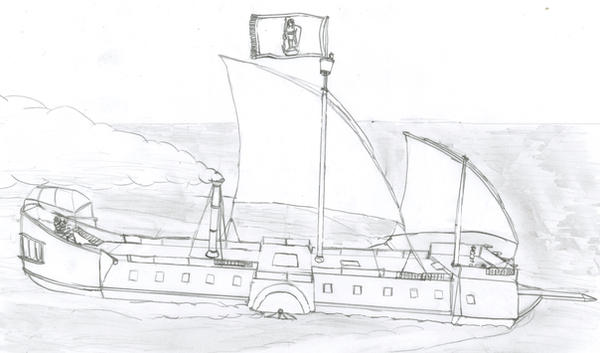 (Detentional Labor Camp-42, Central Forests, Infrastructure, late autumn 36 IA)
(Detentional Labor Camp-42, Central Forests, Infrastructure, late autumn 36 IA)
Corporal Yuri Darinov checked the load on his shotgun as the train pulled into the station, flipping off the safety when it came to a complete stop. Part of it's load was the usual supplies of flour, potatoes, lard, beans, bacon, beer and cann'ed meat and vegetables that fueled any lumber camp, the other bit was far less pleasant. There were three Box Cars which were unloaded first one by one. When the door on the first one was opened it let out a wofting human stink.
"Tsilshai, Jehim! Tsilshai, Jehim!" he barked. With that from the gloom came a bedraggled Janissary in prison uniform. He walked with a limp but kept moving quietly. Another followed soon afterwards, as did another. He and a couple other guards monitored them as they filed out and were lead off to be assigned quarters. All of them seemed comparatively healthy despite some wounds, if disheveled and unkempt. Their cars had been outfitted with a rudimentary latrine and benches per Detail's request. Part of him privately objected to that as being too good for them, even though the cars smelt bad enough with them. He'd heard the reports of what Janissaries were like and what they did to the people their masters loosed them upon. The official policy was that they were made like that by the Dark Elves and they could still become something else if given the opportunity even though he still thought it would be simpler just to put them down.
Even so going by what he'd read in The Recon (the army's newspaper) not that many of the Janissaries at the battle of Daagsgrad had been taken alive. Most of them had either died fighting or at least trying to get to the fight. Some of those who had tried were cut down Drow warriors or in some cases their fellow slave soldiers. Apparently it had to do with their slave religion. One thing that he'd noticed about captured Janissaries was (at least after they'd been in detention for some time) in most cases the fight just seemed to melt out of them and unless they were ordered to do something they tended to mope about. Many of them ate little despite the fact that timber harvesting and charcoal production was demanding work. A few of them committed suicide or tried to do so. This did not make him sympathetic to them, but it did take the edge off his disdain.
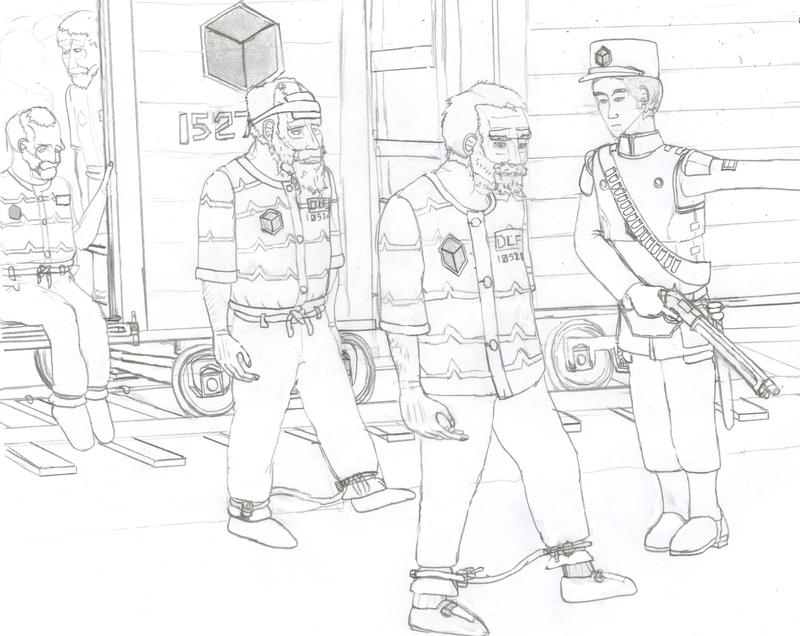 (Detentional Labor Camp-37, Dragonspine Mountains, 36 IA)
(Detentional Labor Camp-37, Dragonspine Mountains, 36 IA)
It had been more than month since the battle of Daagsgrad and three weeks since Talsi ti'Xolcas had arrived in Camp-37. After she'd gotten over the initial shock of actually surrendering and while working her way through the post capture despair she'd been afraid about what these Coldlanders were going to do with her. Her mind had conjured a whole lot of horrible fates of being an Infrastructural slaves. She'd heard all the tales and stories of what envious renegade lesser beings who did not understand the natural order did to those of nominally superior blood to them. What none of them ever included much mention of was onions. One or two of them might have made mention of putting them into giant cauldrons with them as part of some terrible feast, but none of them ever spoke about cutting up hundreds of them a day with a knife designed so that you could not stab someone with it along with carrots, mushrooms, potatoes, turnips and various other vegetables which ended up in the camp's stew.
She, as well as forty nine others who had surrendered were given the job of manning the camp's kitchens, which were as of yet being expanded. Their job was to feed some twelve hundred fellow prisoners of war, all Drow. The guards who kept them under key and a small number of human staff ate their own food out of their own kitchens. Making oatmeal, vegetable soup and stew, rye bread and other such dishes as well as well as cleaning up the kitchen afterwards was a fairly hard job and there were unpleasant consequences for disobedience, but if nothing else it was in the warm (a fact which they were getting more thankful for with each passing day as winter encroached) and there was a fair amount to eat, even if it was the same stuff they made for the rest of the lot to ensure that people at least tried. If nothing else it was better than working in the mines. Every night the humans would blow off a section of mountain, leaving a huge pile of rocks which most of the prisoners had to shovel into wheelbarrows and then load into shipping crates.
One of the odd quirks that she found out about the kitchens was that it involved an inversion of the social order. Houe Xolcas was a low ranking warrior house which could only afford a few slaves, as such one thing that she and her brothers, sisters and cousins had been taught was how to cook (both in a kitchen and on a cook fire). She and a few others had done done well in the kitchens. On the other end of the spectrum some of those from higher ranking families (especially merchant families) who felt that cooking was something done by slaves. They were struggling with basic things even with the various aids and instructions given to them by the Infrastructurals.
As a rule she and her counterparts worked about nine to ten hours a day, with a few hours being light and others being more hectic. It was still less work than what was done by the miners. There were ten teams of five, which were organized into two cadres. Those individuals who did well and did not cause problems got tokens which they could cash in for meat, beer and exemption from cleaning. Those who did poorly and caused trouble had to do extra cleaning work and other dirty jobs and in one case got assigned to the construction gangs. Surprisingly the guards cared little if people ate some vegetables as they worked, so long as they did not throw half eaten things to be cooked. It wasn't fancy or spiced with anything more than garlic and salt, but there was a lot of it. The time after that was spent in the barracks and at the tutorials where they tried to teach them how to speak their language using a lamp-show and getting them to repeat phrases. She wondered why they were doing this. The survivors of a failed attack on a Drow State would be lucky if they were simply flayed for their skins. Mostly she put it down to softness, a trait that she'd been raised to despise and exploit. Something that she'd convinced herself she was doing at the moment. Even so she did not make her disdain known.
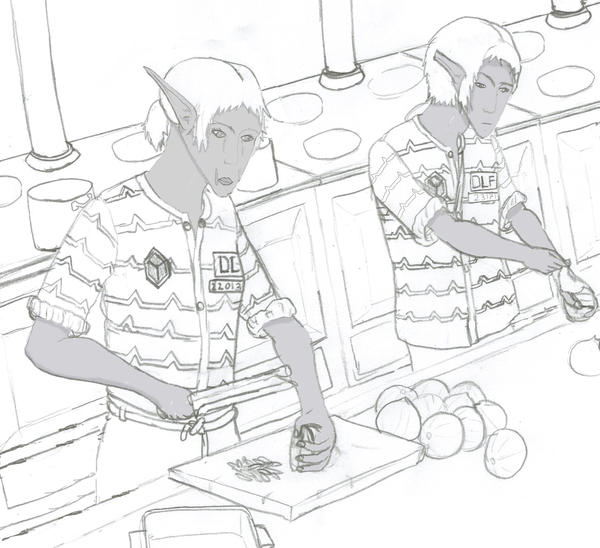 (Dalatyr Citadel, Dalatyr, Early Winter 36 IA)
(Dalatyr Citadel, Dalatyr, Early Winter 36 IA)
Lord Telsion trek from Illvanas to Infrastructure had been uneventful if not enjoyable. The small Arrowship that ferried him and his party had managed to exit Dragonstorm bay without incident but even with a pair of experienced weather mages the northern seas had been rough. Once it had put into Borogskov he was soon on one of their railway trains, which was more comfortable though the rhythmic bumping got to him, it smelled of coalsmoke and their food while not as bad as he expected was heavy by his standards. After arriving in Dalatyr and the consulate he had a warm bath and a good night's sleep. Whatever
He did not have much time to take in either the former Slave Port nor the city that had become the heart of this new state, but what he did see of the local architecture did not impress him. The houses were either ugly, uniform brick boxes or ramshackle constructs made from whatever was on hand (though these were less common than he expected), the factories were huge monstrosities, ghastly towers of steel reached for the sky and there was coal soot everywhere. As useful as their products could be against the The Corrupted he had no interest in getting to see them. In any case this matter was a pressing one. After breakfast he made his way to The Citadel. Enclosed from the rest the city by walls the building was an imposing structure even if it was still mostly spartan. Inside it's Northern hallway he met with Supernova, dressed in a Bureaucrat's uniform without procession beyond a few bodyguards. All of these details added up to a leadership which was disinterested in finery and ceremony. Personal aesthetic preferences aside there were pros and cons to this: on the one hand it generally meant that they had an edge in marshaling forces and this was clearly the case. On the other hand it meant that certain options were less effective in guiding them into the right direction. This was before the unknown aspects of whatever the Central Committee was, but regardless the Nation that they built
"Good morning to you, esteemed Lord" she said making a polite bow. "We are honored by your visit and the attention of your High King."
"As are we to have the opportunity to meet with those who have achieved so much so quickly, honorable Committee Member I also must bear the regrets and apologies of His Majesty in regards to our previous inaction despite the plight of your people against The Corrupt, even if you understood our previous strategic situation." As was required by the situation he was polite and apologetic. He was still unable to make sense of the strange methods that operate in
"Of course, though it comes as a relief that we've managed to change the situation and we are glad that you are now moving forward." He did not miss the note of dissatisfaction, not that it was wholly unwarranted. "On behalf of the Committee and the People of Infrastructure you have our gratitude for what assistance you can provide. To aide you in this endevor we are currently readying a shipment of some thirty six guns along with associated gear, several thousand shells and an instructor. The best weapons our foundries can produce and the finest guns on the planet. A full report will be provided of course."
"I look forward to informing my king of your most generous gift" he said with total honesty, given the reports of their effectiveness. "On the same note my expedition has brought our own tokens of friendship to share. Five hundred swords strengthened by our fine runesmiths as well as tomes of curse breaking. He also offers the members of your Committee each a boon as a gesture of goodwill. Anything within reason for you personal benefit."
"If it is all the same to I would want to request my boon now, though it is a bit unusual." She said to his surprise.
"Really? Most would give such an offer a good deal of thought as the King does not offer such boons every day."
"And so I have done."
"Very well. I'll hear your proposal and I'll relay it this evening just so you have some more time to mull it over just in case."
"This is a bit of an usual request and it will require some explanation." She sounded a bit embarrassed, as if talking about an awkard issue "As you know I am not human, nor a being of flesh and blood like yourself. Our bodies are basically clothing that we wear to better interact with flesh and blood creatures. I've elected to make mine more human than most of my fellows with an outer layer of skin and hair and similar, but there are complications to that."
"And what would those be?"
"Wear and tear. It's less of an issue for Drive or Detail because they don't bother trying to look exactly human, but humans have a tendency to notice such things and they often find it off putting. Even with a bit of patching I can't get it to last more than a couple of years at most before I have to recycle it. However, I've heard that your mages can weave spells into cloth and leather to make clothes that can mend themselves." She then extracted from a pocket a length of material. "If it is possible I would request a that a suit of skin be made with such properties. This is a sample of it's material."
This was a promising development. "As you request." He then took the strip of skinlike material and tucked it away into a pocket.
"In any case we have a lot to discuss. We've had a conference room readied as well as full reports."
"Of course." With that he followed her lead.
